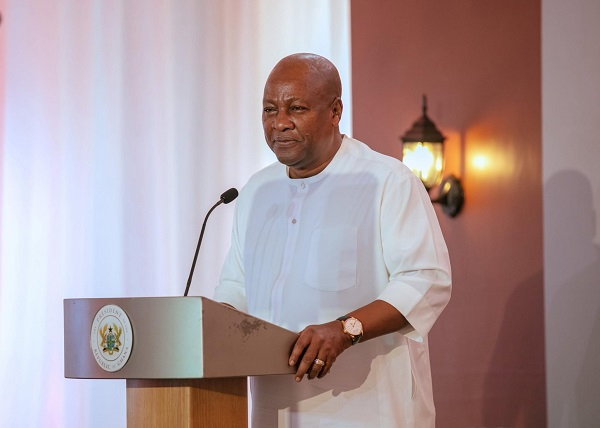The Club World Cup: Becoming more competitive and entertaining than expected, By Yusuf Bangura

Perhaps, if this tournament turns out to be hugely successful, as I expect it will be, it may be just what African club football needs to get its act together. African club fans may begin to ask an uncomfortable question: “why aren’t we in the Club World Cup?” This may spur club owners and managers to wake up and treat club football seriously.
I’ve been watching the Club World Cup (CWC) in the past couple of days, going to bed at times at 5 a.m. because of the time difference between Europe and the US, where the tournament is taking place.
I watch and read about football a lot, although I’m not a club fan. I have teams that I like because of how they play, but I can switch sides if they fail to entertain or deliver. I treat the game purely as entertainment or pastime.
The CWC is a new FIFA tournament that has replaced the six-club World Cup tournament, which failed to attract global interest because the teams were few and the gulf in quality between Europe’s representative (the Champions League winner) and winners of other confederation tournaments, was huge. The European clubs almost always won the six-club World Cup.
In the new format, which imitates the country-based four-yearly World Cup tournament, FIFA selects 32 teams, based on a complex formula that I’ve not bothered to fully understand. The teams are drawn from all six of FIFA’s confederations. I’m still scratching my head to understand why a team like Salzburg, which has hardly progressed beyond the group stage of the Champions League, is in the tournament, when top teams like Barcelona and Liverpool are not.
Like the World Cup, clubs in the new tournament are grouped into eight sets, with the top two in each set qualifying for the knockout stages. So, there’s plenty of football to watch over a period of one month. The CWC could become another football festival to look forward to every four years if this one succeeds.
When FIFA announced the tournament in 2023, I dismissed it as a gimmick or silly attempt to make money and upstage the European Champions League — the most celebrated international club tournament. This was also the view of most football pundits.
European Clubs Dominate Global Club Football
The reason for my scepticism about the value of the CWC is simple. Although football has become a global phenomenon, most of the best players in the world are in Europe. This is because of the high levels of pay inequalities between European and non-European leagues. Indeed, there has been a massive footdrain from Latin America, Africa, and other regions to Europe.
It has been estimated that about 65 per cent of the players registered in the English Premier League, for instance, are foreign. Even though a large number of those players come from other European countries, many are also recruited from Latin America, Africa and Asia. The Football Observatory Monthly Report of 2016 showed that 48 per cent of players in European leagues were foreign.
In the last three years, the Saudi Pro-League has tried to use oil rent to attract global stars and therefore rival the European leagues. Although it has signed some young players, the Saudi league’s big stars have tended to be in their twilight years.
And despite the US’ high income levels, the MLS (Major League Soccer) has been unable to attract top Europe-based players in their prime. In the eyes of many, the MLS is a retirement home for global superstars — the place they go to have a good time when they age before calling it quits.
Global club football has, thus, been overwhelmingly dominated by Europe, which doesn’t just attract the best players; it also attracts the best managers. And, most football fans in the world watch the top five European leagues and the Champions League every week.
I was familiar with the names of a few Latin American clubs, such as Flamengo, Boca Juniors, River Plate, Palmeiras and Santos, but (apart from Santos) had never watched them play until this Club World Cup. I watched Santos in 1973 against Fulham in London. I wanted to see Pelé, their star player, so I went to Craven Cottage, Fulham’s stadium. That was the only opportunity I had to watch Pelé live at a stadium. Santos was one of the best clubs in the world during that period.
And despite the publicity that the Saudi Pro League has enjoyed in recent years by attracting star players like Ronaldo (R7), Neymar, Benzema and Mane, I’ve never watched a Saudi league match. I assume that even if these players are still good, they are just a sprinkling of gold dust in an otherwise mediocre league.
With the best players in the world plying their trade in Europe, there was no incentive for me to watch non-European club matches. I felt that the best Brazilian and Argentinian players were already in Europe.
A CIES Football Observatory Report estimated in 2020 that Brazil had the highest number of players in foreign leagues in 2019 — 1,535 players. And in the 2022 World Cup in Qatar, about 85 per cent of Brazil’s squad and 96 per cent of Argentina’s played in Europe.
I, thus, asked myself a simple question: “Why should I watch Brazilian and Argentinian players in inferior Latin American leagues when I watch their best players in Europe every week?”
Still, I decided to watch the Club World Cup at the start of the tournament on 14 June to properly assess the true state of football in Latin America and other regions. I strongly believed that FIFA would have eggs on its face as the gulf in quality between European and non-European clubs would be like night and day. I was convinced that interest in the tournament would fizzle out when fans realised that the CWC was just an expanded European Champions League with a lot of inferior teams. Boy, was I wrong!
Non-European Clubs Impress
After two rounds of football and 32 matches at the group stage, I can categorically state that I’ve been proved wrong. I’m enjoying the football, vibes, stadium atmosphere, and shock results. Although some matches have not been well patronised, many have attracted huge and enthusiastic crowds ranging from 70,000 to 80,000 attendees.
Apart from the shoddy display of the New Zealand and Oceana Football Confederation champions, Auckland FC, which was trounced 10-0 by Bayern Munich, European club football is not miles ahead of the football that the other confederations are playing at the tournament. I’ve also not been impressed by Al Ain from the United Arab Emirates, which has conceded 11 goals in two matches without scoring any.
Latin American (especially Brazilian) and African football, as well as Inter Miami and the Saudi league’s Al Ahli, are giving an amazingly good account of themselves. None of the four teams fielded by Brazil (Flamengo, Palmeiras, Botafogo and Fluminense) have been defeated. Shockingly, Europe’s best team, Paris St. Germain (PSG), the Champions League winners, lost 1-0 to Botafogo, which currently sits eighth in Brazil’s top tier league table. And Flamengo, the current leaders in the Brazilian league, demolished another top European team, Chelsea, 3-1. Flamengo completely outplayed Chelsea in all departments of the game — ball retention, positional play, physicality, passes, attempts on goal, and counter-pressing.
And Messi delivered a wonder goal from just outside the penalty box to help a very average Inter Miami team beat Portugal’s Porto (a regular Champions League team), 2-1. Inter Miami had four retirees from Barcelona (Messi, Sergio Busquets, Luis Suarez and Jordi Alba).
Suarez looked washed up. His reflex, pacy moves, and quick, intricate turns, which entertained fans when he was at Liverpool and Barcelona, are gone. When he flopped a sitter from Messi and held his head up in disbelief, he really looked like a 70-year old. But Messi still looked incredibly impressive as a playmaker. He’s lost his pace, but his technical ability, dribbling, passes, free kicks and reading of the game are still first rate.
Latin American teams top five of the eight groups of the CWC after two rounds of football. European teams top three. If the Latin American teams go far into the tournament (say up to the quarter finals), FIFA would be vindicated for showcasing the talent that is coming out of the non-European football world.
Western pundits have been shocked by the tough challenge some of the European teams have faced in the tournament. Some pundits have tried to belittle the achievements of the non-European clubs by claiming that apart from Real Madrid, which didn’t have a good season, no other European club is taking the tournament seriously; that European clubs have had a long season; and that the US Summer heat disadvantages European teams.
Anyone who’s following the tournament should clearly see that European clubs are giving their best and want to win. However, they face highly motivated, organised and skilful opponents. The excuse of a long European football season is also lame, given the huge quality squads that European clubs have assembled for the tournament. Besides, only two matches have been played by each club, and some European clubs, such as Bayern Munich, Juventus, and Manchester City, have hit the ground running. The argument about the heat is also ridiculous. European clubs did well in the sweltering heat of Qatar during the 2022 World Cup. France only lost the final to Argentina on penalties.
The Triumph of Standardised Football: Is the Era of Brazilian Football Magicians Over?
Two things have stood out to me after watching most of the games in the first two rounds of the group stage. The first is that even though European clubs are still superior because of the quality of their players, who are drawn from all corners of the world, they do not call the shots. European clubs and their fans now know that they can be beaten by non-European clubs. Even though I still expect a European team to win the tournament, I wouldn’t be surprised if a Brazilian or South American team wins it.
The only team that seems out of place in the tournament is Auckland FC, whose players have full time non-football jobs. It has been reported that most of the Auckland players were given leave with no pay at their places of work in order for them to participate in the tournament.
It’s good to have teams from all six of FIFA’s confederations in the tournament. However, quality also matters for the integrity of the tournament. I don’t think most fans would like to watch a match between highly paid professionals and amateurs. The old format of playoffs between top teams from weak confederations and strong teams that fail to secure qualification in strong confederations could be used to weed out terribly poor teams like Auckland FC.
The second thing that has stood out for me is how football has become highly standardised across the world. Apart from Auckland, most of the teams play the same style of football and have mastered the basic techniques of the game, such as the high press; quick, short passes; ball possession; playing from the back and exploding in the final third, instead of long balls; skilful use of counterattacks; use of the wings to draw opponents out; and compact defending.
The Brazilian teams have really impressed me the most on techniques and basics. Even though they’ve now become nurseries for European clubs, they still play very good football, comparable to the football in the top European leagues.
However, the dazzling style of Brazilian football of yesteryears — noted for its sustained dribbles, feints, flicks, and acrobatic displays — seems to have disappeared. You’re likely to be disappointed if you’re looking in this tournament for the Brazil players that dazzled the world from the 1950s to the early 2000s. Brazil doesn’t seem able anymore to produce players such as Pelé, Garincha, Tostao, Rivellino, Socretes, Romario, Ronaldo (the Phenomenon), Ronaldinho, Rivaldo, Kaka, Roberto Carlos, Dani Alves, Cafu, and Neymar. Neymar was the last Brazilian magician.
The new breed of Brazilian players (Vinicius jr, Rodrygo, Richarlison, and Raphinia) don’t cut it. They can produce flashes of brilliance, but can’t entertain fans or keep fans off their seat for long periods. The Brazilian club players are technically effective but lack the wow factor.
Will the Club World Cup help to revive club football in sub-Saharan Africa?
Let me end with some remarks on the poor representation of sub-Saharan African clubs in the tournament. The Club World Cup has exposed the poor state of club football in sub-Saharan Africa. Africa was granted four slots in the tournament. Clubs in North Africa took three of the slots and South Africa took the fourth. It is clear that club football is more developed in those countries than in other parts of Africa. North Africa and South Africa have higher income levels and better infrastructure than most African countries.
The lopsided African representation in the Club World Cup is very different from what usually obtains in country-based World Cup tournaments, in which sub-Saharan African countries often have about three of the five African slots. It’s clear that Sub-Saharan African countries have relied on foreign or Europe-based African players to cover up the gross underdevelopment of club football in the region.
According to a KPMG study in 2021 (The African Power in Europe), more than 500 African footballers played in 11 major European leagues that year. The top 10 countries of those players were all from sub-Saharan Africa: Senegal, Morocco, Nigeria, Côte d’Ivoire, Ghana, Algeria, Mali, Cameroon, DR Congo and Guinea. Indeed, 90 per cent of Cameroon’s squad, 92 per cent of Ghana’s, and 100 per cent of Senegal’s in the 2022 Qatar World Cup played for European clubs (See Y. Bangura, “The Globalisation of football is closing performance gaps among countries”).
Apart from South Africa, club football has not fared well, especially since the economic crisis of the 1980s. Even when football was not played by professionals in the 1960s and 70s, African fans patronised local club football. In recent times, however, fans have followed the migratory choices of gifted African players by switching from poorly resourced local leagues to the well-marketed and attractive European leagues. Fans spend a lot of time and money to follow teams such as Arsenal, Manchester United, Liverpool, Chelsea, Barcelona, Real Madrid and PSG, than local football clubs.
The problems are stark and many. Global football has become a highly professional and thriving mega-business. However, the level of professionalisation of African club football remains abysmally low. Only a few clubs, such as TP Mazembe of the Democratic Republic of Congo, Ashanti Gold of Ghana, Vipers SC of Uganda, Baroka FC of South Africa, Nkana of Zambia and a few clubs in Nigeria have their own stadiums. Clubs struggle to pay salaries and can’t retain good players because of limited resources. They also don’t have medical and other facilities that are necessary to compete at the top level of global football.
The four African teams at the CWC have performed fairly well, even though they’re unlikely to progress to the next round. ES Tunis beat Los Angeles FC, 1-0; Mamelodi Sundowns of South Africa beat Ulsan of South Korea, 1-0; and Al Ahly of Egypt drew the opening match of the tournament with Inter Miami, 0-0. Even when they were beaten, African teams were competitive in the first two rounds of the tournament.
Perhaps, if this tournament turns out to be hugely successful, as I expect it will be, it may be just what African club football needs to get its act together. African club fans may begin to ask an uncomfortable question: “why aren’t we in the Club World Cup?” This may spur club owners and managers to wake up and treat club football seriously.
Yusuf Bangura writes from Nyon in Switzerland. Email: [email protected]









